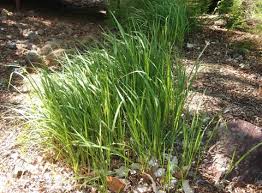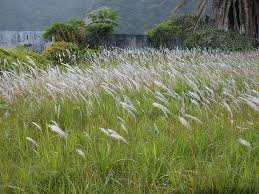Imperata Cylindrica, also known by its is a type of grass that grows in many parts of the world. This grass is sometimes called Cogon Grass or Japanese Blood Grass. Imperata Cylindrica is known for its distinct appearance with tall, upright stems and feathery flower heads.
One interesting thing about Imperata Cylindrica is that it can grow quite quickly and spread to cover large areas. Its leaves are long and narrow, and they often have a reddish or purplish color, especially at the tips. This gives the grass a unique and eye-catching look.
People have found various uses for Imperata Cylindrica over the years. In some places, it has been used for thatching roofs of traditional houses. Its long, tough leaves are woven together to create durable roofing material. Additionally, Imperata Cylindrica has been utilized for erosion control on slopes and along riverbanks because its extensive root system helps hold soil in place.
While Imperata Cylindrica has its benefits, it can also be quite invasive. This means that it has a tendency to spread quickly and take over areas where it’s not wanted. Its rapid growth can crowd out native plants and disrupt the balance of ecosystems. Because of this, efforts are often made to manage and control its spread in certain regions.
In gardens, Imperata Cylindrica is sometimes grown as an ornamental plant for its unique appearance. The “Japanese Blood Grass” variety, in particular, is popular for its red-tipped leaves that resemble a splash of blood. However, it’s important to be cautious when planting this grass in gardens, as it can become invasive and difficult to remove if it starts spreading uncontrollably.
In addition, Imperata Cylindrica is a distinctive grass with its tall stems, reddish leaves, and feathery flower heads. While it has been used for practical purposes like thatching and erosion control, it can also become invasive and disrupt natural habitats. Its striking appearance makes it a sought-after ornamental plant, but careful management is necessary to prevent its overgrowth.
Read Also: Composition of Soils and Soil Materials
Growing and Care Guide of Imperata Cylindrica Grass

Growing and caring for Imperata Cylindrica, also known as Cogon Grass or Japanese Blood Grass, can be a rewarding experience. Here’s a simple guide to help you cultivate and maintain this unique grass:
1. Choosing the Right Location: Select a sunny or partially shaded spot in your garden where Imperata Cylindrica can receive at least 6 hours of sunlight daily. Ensure the soil is well-draining, as this grass doesn’t like to sit in waterlogged soil.
2. Planting: Imperata Cylindrica can be grown from seeds, rhizomes, or young plants. Plant seeds or rhizomes in the spring or early summer, spacing them about 12 to 18 inches apart. Plant at a depth of around 1 inch and water thoroughly after planting.
3. Soil Requirements: This grass is adaptable to a range of soil types but prefers slightly acidic to neutral soil. If your soil is too compacted or heavy, amending it with organic matter like compost can improve drainage.
4. Watering: During the establishment phase, keep the soil consistently moist but not waterlogged. Once established, Imperata Cylindrica is moderately drought-tolerant, but it’s best to water during extended dry periods.
5. Fertilizing: Feed the grass with a balanced, slow-release fertilizer in the spring to encourage healthy growth. Avoid over-fertilizing, as this can lead to excessive leaf growth and reduce the vibrancy of the colors.
6. Pruning: Imperata Cylindrica doesn’t require regular pruning, but you can trim back any dead or damaged foliage in the late winter or early spring. This helps promote new growth and keeps the plant looking neat.
7. Managing Invasiveness: Be cautious of its potential to become invasive. To prevent overgrowth, regularly check for any signs of spreading beyond its intended area. If needed, you can create barriers like edging to control its growth.
8. Pests and Diseases: This grass is generally resistant to pests and diseases. However, keep an eye out for common garden pests like aphids and grasshoppers. If you notice any issues, treat them promptly with appropriate insecticides.
9. Winter Care: In colder climates, Imperata Cylindrica can die back in winter. You can leave the dried foliage for added winter interest or cut it back to the ground. Mulching around the base of the plant can help protect the roots from harsh temperatures.
10. Propagation: If you want to propagate Imperata Cylindrica, you can divide established clumps in the spring. Dig up the clump, carefully separate the rhizomes, and replant them in new locations.
Remember that Imperata Cylindrica has the potential to become invasive, so it’s important to monitor its growth and prevent it from spreading into unwanted areas. By following these simple steps, you can enjoy the beauty of this grass while keeping it well-behaved in your garden.
Benefits and Uses of Imperata Cylindrica Grass

Imperata Cylindrica, also known as Cogon Grass or Japanese Blood Grass, offers several benefits and has various uses that span practical, decorative, and environmental domains. Here are some notable benefits and uses of this unique grass:
1. Erosion Control: Imperata Cylindrica’s extensive root system helps stabilize soil on slopes, embankments, and riverbanks, making it effective for erosion control. The dense network of roots helps prevent soil erosion by anchoring the soil and reducing water runoff.
2. Thatching Material: Traditionally, Imperata Cylindrica has been used in some regions as a thatching material for roofs of traditional houses. Its long, tough leaves are woven together to create durable roofing that provides insulation and protection from the elements.
3. Ornamental Planting: The visually striking appearance of Imperata Cylindrica, especially the “Japanese Blood Grass” variety with its red-tipped leaves, makes it a popular choice for ornamental planting in gardens and landscapes. It adds a splash of color and texture to flower beds, borders, and even containers.
4. Biodiversity Enhancement: In some cases, Imperata Cylindrica has been used in habitat restoration projects to create or enhance wildlife habitats. Its dense growth can provide shelter for small animals and insects while promoting soil stability.
5. Traditional Medicine: In certain cultures, Imperata Cylindrica has been used in traditional herbal medicine for its potential health benefits. It has been believed to possess diuretic and anti-inflammatory properties, although scientific research on these claims is limited.
6. Craft and Art Material: The unique appearance of Imperata Cylindrica’s flower heads and foliage has inspired crafters and artists to incorporate it into various artistic projects. It can be used in floral arrangements, weaving, and other creative endeavors.
7. Soil Improvement: As Imperata Cylindrica decomposes, it adds organic matter to the soil, contributing to soil fertility and structure. This is especially true if the grass is allowed to naturally die back and return its nutrients to the soil.
8. Livestock Forage: In some regions, Imperata Cylindrica has been used as forage for livestock, especially during times when other forage sources are scarce. However, it should be noted that its nutritional value for livestock might be limited.
9. Research and Study: Imperata Cylindrica has attracted attention from researchers studying invasive species, ecology, and plant genetics. Its ability to spread rapidly and adapt to various environments makes it a subject of interest for understanding plant behavior and ecological dynamics.
10. Fiber Production: The long, durable leaves of Imperata Cylindrica can potentially be processed to produce fibers that have applications in crafts, textiles, and other industries.
While Imperata Cylindrica offers several benefits and uses, it’s important to be aware of its potential invasiveness in non-native environments. Careful management and consideration of its growth habits are necessary to prevent it from becoming invasive and displacing native plant species.
Read Also: The Different Uses of Soils
Where to Imperata Cylindrica Grass near Me/You
Here are three easy places where you might find Imperata Cylindrica (Cogon Grass):
1. Gardening Centers and Nurseries: Many gardening centers and plant nurseries offer a variety of ornamental grasses, including Imperata Cylindrica. You can visit these places to find potted plants or seeds for your garden.
2. Online Plant Retailers: Numerous online retailers specialize in selling plants and seeds. You can search for Imperata Cylindrica or its common names on these websites to order the grass and have it delivered to your doorstep.
3. Public Gardens and Parks: Some public gardens, parks, or botanical gardens may have Imperata Cylindrica planted for ornamental purposes. Visiting these places could provide you with an opportunity to see the grass in a natural setting and possibly gather information on where to obtain it.
Remember, when sourcing plants, make sure to verify that they are being obtained from reputable sources to prevent the introduction of invasive species into your local environment.
Read Also: The Importance of Channels of Distribution and Selecting an Appropriate Channel
